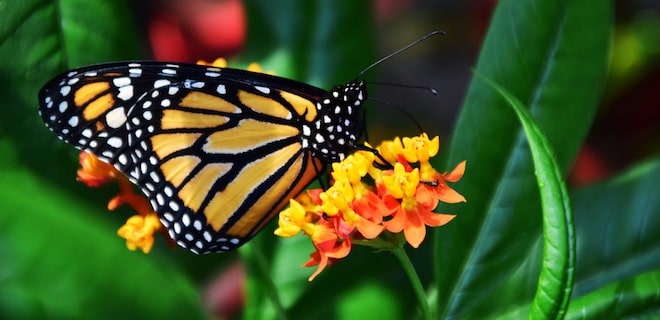We recently began working with the Monarch Butterfly Fund, an international organization committed to the preservation of the monarch butterfly’s migration patterns across North America. The organization is initiating a competition that challenges technology designers to create a tracking device that can deliver the scientific insights needed to better understand and preserve monarch butterfly environments and the requirements for the species’ annual migration.
Every fall, millions of monarchs travel from southern Canada to central Mexico, a distance of up to 3,000 miles. Contemporary tracking tools are limited, so we don’t fully understand the butterflies’ daily migratory flight or how changing environmental conditions affect that flight. Today, scientists use adhesive tags attached to the hindwing; data can only be gathered by retrieving these tags after the butterflies die…and even then, the data provided is limited.
Scientists want to understand just where the monarch butterflies go on a daily basis and how long they can travel before resting, whether or not they easily find food and how climate change may be affecting migration routes. They suspect that habitat loss throughout North America is seriously impacting length and direction of the monarch butterfly migration, and ultimately, the continued survival of the species.
Tacoma business leader Eli Moreno is currently serving on the MBF board of directors and is spearheading the design competition. He has a particular interest in monarch butterflies, thanks to a memorable interaction with them.
“I got involved with MBF after we took a family trip to Mexico about 15 years ago, and we visited the monarch butterflies’ overwintering area,” he said. “Let me tell you, nothing can prepare you for that experience. Millions of butterflies flying around – some were hibernating in oyamel fir trees, causing their thick branches to almost touch the ground. It is an amazing sight, a true natural wonder…it felt like we were on sacred ground (and it must be, because the butterflies only gather in a very small area of the forest).”
The MBF is offering $50,000 to the person or persons who can develop a ground-breaking technology that can be easily integrated into conservation research, allowing scientists to track individual monarch butterflies during migration. Proposals must be submitted by April 1, 2018. More about the submission process is available by reading the RFP.
Any individual can participate in the Monarch Butterfly Fund Challenge, even if he or she isn’t entering the competition. For example, you can adopt a number of butterflies and help further the cause. Just visit the MBF donation page.

